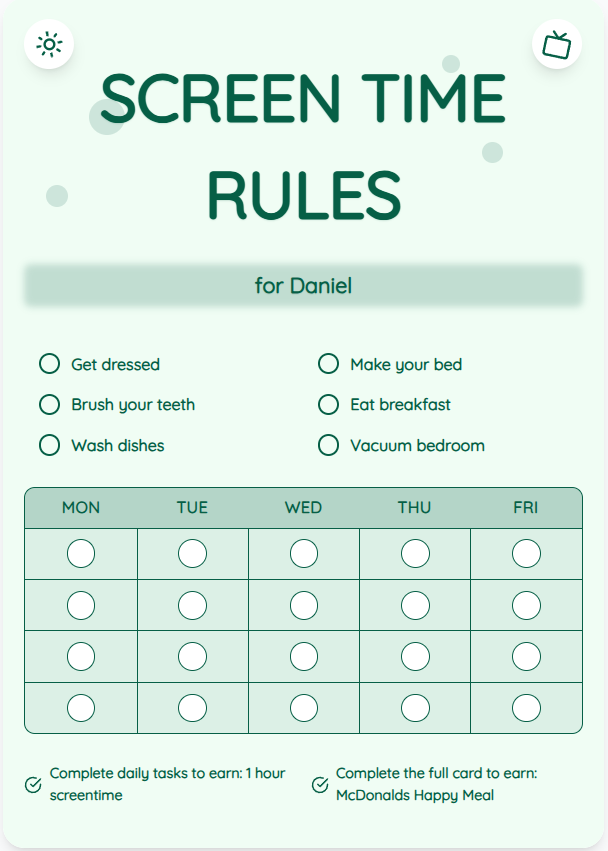Understanding Normal Screen Time Limits for Children: Expert Tips & Guidelines
As a parent, you may wonder how much screen time is normal for your child. Finding the right balance between technology use and other activities is crucial for their development. Here, we provide expert guidance and actionable tips to help you navigate screen time rules effectively.
See What Your Screen Time Chart Will Look Like
Here's an example of a beautiful, customizable screen time rules chart you can create for your family

Setting Screen Time Guidelines
Establishing clear screen time guidelines is essential. Consider factors like your child's age, daily routine, and individual needs. Experts recommend limiting screen time to 1 hour per day for children aged 2-5 and up to 2 hours for those aged 6-12. However, quality matters more than quantity. Prioritize educational or interactive content over mindless scrolling.
Creating a Screen Time Schedule
Develop a screen time schedule that aligns with your family's values and routines. Ensure that screen time doesn't interfere with crucial activities like sleep, playtime, or homework. Encourage outdoor play, reading, and social interactions to promote a well-rounded childhood experience.
Put These Tips Into Action
Create a custom chart to implement these strategies with your child
Monitoring Screen Time Usage
Regularly monitor your child's screen time usage and content. Use parental controls and screen time tracking apps to enforce limits effectively. Encourage open communication about online activities and engage in tech-free bonding moments to strengthen family connections.
Practical Tips for Success
- Set clear screen time rules and communicate them with your child.
- Encourage physical activities and hobbies to reduce screen time.
- Use screen time charts to visually represent and track daily limits.
- Lead by example by demonstrating healthy screen time habits.
Frequently Asked Questions
Is any amount of screen time safe for young children?
While some screen time can have educational benefits, it's crucial to limit exposure and prioritize active play and social interactions for young children's overall development.
How can I handle resistance when enforcing screen time limits?
Consistency is key. Set clear expectations, offer alternatives, and involve your child in creating a screen time schedule to foster cooperation.
What are the signs of excessive screen time in children?
Warning signs include irritability, poor sleep, decreased social interactions, and declining academic performance. Monitor your child's behavior for any red flags.
Finding the right balance in screen time management is crucial for your child's well-being and development. By following expert guidelines, creating a structured approach, and staying vigilant about usage, you can promote healthy screen habits within your family. Explore our Screen Time Rules chart generator for personalized solutions tailored to your child's needs.
Ready to Transform Your Family's Screen Time?
Join thousands of parents who have successfully managed screen time with our customizable charts.
